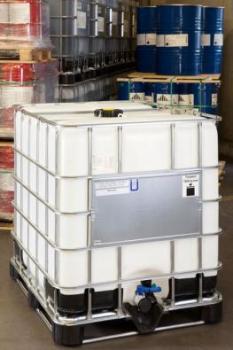We are all familiar with the crackling sound and one’s hair standing on end when taking off a synthetic sweater – which is at worst mildly discomforting. In industry however, the electrostatic charging of plastics can cause the failure of electronic components and computer chips and is even capable of igniting combustible gases, vapours and dusts. On the surface of a polymer, which is at first electrically neutral, charge may be generated by contact with another surface and subsequent rapid separation. Without suitable dissipation, this charge can neutralise in an uncontrolled and abrupt fashion. To address this problem, BASF has now for the first time developed an antistatic thermoplastic polyurethane (TPU) granulate – at hand as of now under the Elastostat® brand name in the TPU portfolio.
 New antistatic additive for the plastics industry
New antistatic additive for the plastics industry
Elastostat is available as a masterbatch, i.e. as a ready-to-use granular mix. The material is part of the Elastollan® product range that has been embodying BASF Polyurethanes’ TPU expertise for over 30 years.
New fields of application for TPU
Most polymers have insulating properties and are therefore susceptible to electrostatic charging. These materials can now be rendered antistatic through the addition of Elastostat. Elastostat has the edge over existing solutions in that its antistatic effect is permanent and does not require any specific ambient conditions such as a certain atmospheric humidity. What is more, the product is easy to process. The material is highly compatible with standard plastics like polyethylene (PE), polypropylene (PP), polystyrene (PS) and ABS. Simply mixing it with the polymers yields high homogeneity and thus eliminates the need for elaborate compounding. For the plastics-processing industry, this is of great significance, because usually no liquid additives are processed. 7.5 to 15 volume percent of the antistatic TPU masterbatch is added. The properties of the matrix materials are scarcely affected and, thanks to the additive’s neutral coloration, the material can be dyed in any desired color.
Safely dissipating electrostatic charge
Plastics with defined electrical properties are capable of dissipating electrostatic charge in a controlled and permanent way. The decisive characteristic for assessing the electrostatic charging or discharging of a material is its surface resistivity. TRBS 2153 (German technical rules for operation safety “Preventing ignition risks resulting from electrostatic charging”) defines a material’s electrostatic properties in terms of its conductive, dissipative and insulating capacities. A material with a surface resistivity of less than 106 Ohm is said to be conductive. Such materials are capable of rapidly dissipating generated charges, and this can cause damage to sensitive electronic components. Materials with a surface resistivity greater than 1012 Ohm are defined as insulating. Most plastics are insulators that are easily electrostatically charged by friction. Owing to their very low conductivity, the applied charges can remain on their surfaces for a long time and electric chargings of several thousand volts (on synthetic sweaters, for example) are therefore possible. Materials with a surface resistivity of 106 to 1012 Ohm are termed dissipative and are known as Intrinsic Dissipative Polymers (IDPs). The new antistatic additives cover the range of IDPs.
Antistatic treatment for industrial packaging and transport
The new TPU masterbatch opens up large fields of application, particularly for industrial packaging made of polyolefins. Antistatic treatment is an absolute must for containers in which combustible liquids or dusty goods are transported. These packages include big bags and plastic drums or cans. Such materials are also transported in Intermediate Bulk Containers (IBCs). In their most common form, IBCs consist of a polyethylene inner container, a tubular metal outer frame and a pallet. From now on, such containers, which are used for chemicals, foods, cosmetics and pharmaceuticals, can be produced more easily and at lower cost. The TPU additive could also be used in pipelines, hoses and conveyor belts to prevent the electrostatic charging of the transported material.
Anti-dust applications in the automotive industry
Another application sector is the automotive industry, which is increasingly demanding dirt-insensitive materials. Plastic surfaces in vehicles are also susceptible to electrostatic charging. An elevated surface tension can cause the materials to attract dust and dirt particles. The antistatic masterbatch can be used in both film extrusion and injection molding to significantly reduce the surfaces’ dust effect. The possible applications here are mainly in the vehicle interior, e.g. in linings, covers, instrument panels, headliners, sun visors and seat covers.
Electronics packaging – protection from electromagnetic interference
A third field of use comprises packaging and transport systems for electronics. Electronic components have to be protected particularly well, as peak voltages can cause damage when rapidly discharged. Electronic components can also be damaged by electrostatic charging. Packages treated with the new antistatic masterbatch provide a high level of protection from both risks. Such packages include transport trays and tablets for small electronic parts like microchips as well as air bubble film bags and resealable bags for mobile phones, circuit boards, drives and other electronic devices.
The outlook for Elastostat
Elastostat from BASF Polyurethanes is a highly specialised easy-to-process product with an excellent price/performance ratio. The exceptional properties of Elastostat are its permanent antistatic effect, mechanical properties like improved impact resistance, and compatibility with non-polar polymers. In extensive tests, BASF’s experts have demonstrated both - its antistatic effect and compatibility. The homogeneous polymer matrix shows no tendency to delaminate. The test results are also promising in terms of its mechanical properties. BASF further adapts the performance profile of the antistatic TPU to customer applications and requirements and thus develops tailor-made solutions in partnership with the customer.